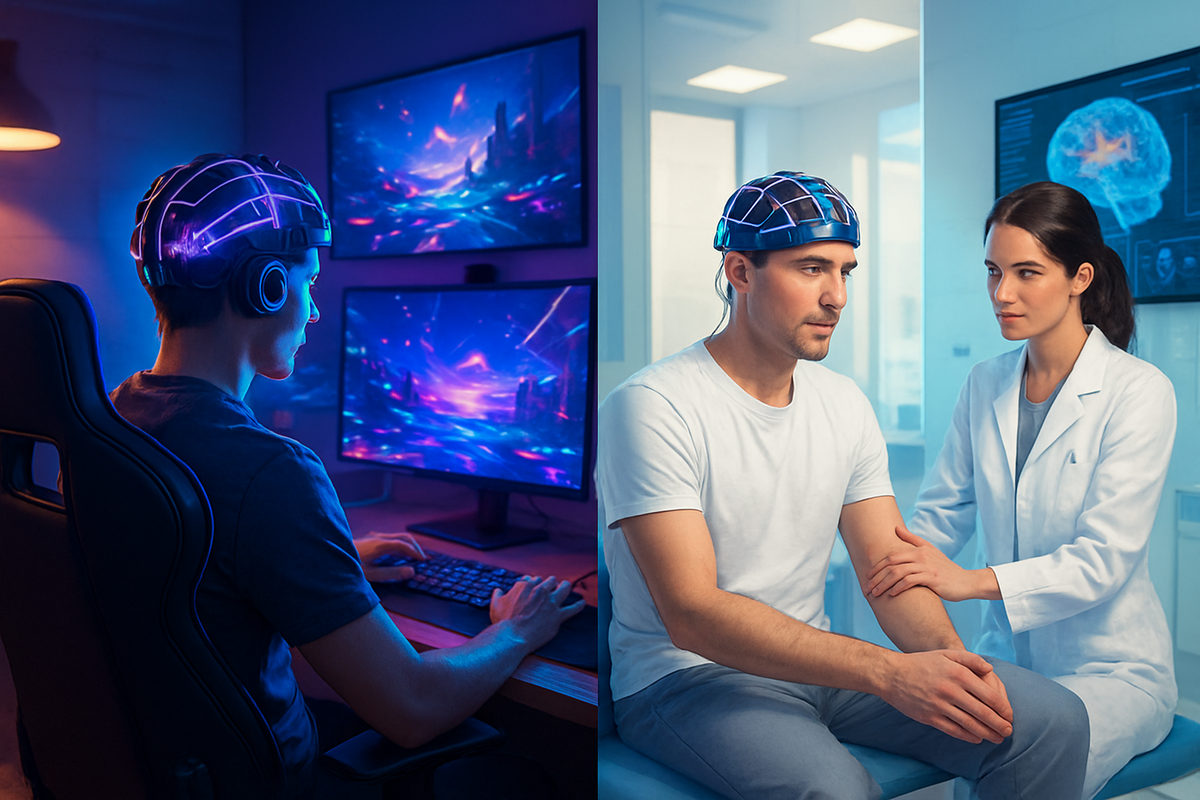The Neural Interface Revolution: How Brain-Computer Tech Is Shaping Gaming, Medicine, and Privacy in 2025
Explore mind-machine fusion as BCIs revolutionize gaming and medicine, unlocking new worlds for the paralyzed and reshaping privacy debates. Discover the Human+ era where technology amplifies human potential—but who do we become in this brave new world?

Welcome to the Age of Mind-Machine Fusion
Imagine racing through Mario Kart or commanding a robot arm—using nothing but your thoughts. In 2025, this isn’t science fiction: it’s a headline, a demo, and, for a lucky few, daily reality. Brain-computer interfaces (BCIs)—the stuff of cyberpunk dreams—are now live, kicking, and raising eyebrows in gaming lounges, hospitals, and legislative halls alike.
“The real revolution isn’t just in what BCIs can do, but in who gets to do it—and what it means for our bodies, our fun, and our freedom of thought.”
Mind-Controlled Gaming: The Ultimate Power-Up
Let's start with the fun stuff—because who hasn’t wanted to play a video game with Jedi mind powers?
- Neuralink’s “Telepathy” implant hit the world stage in 2025 with demos of real people—paralyzed from the neck down—playing Mario Kart and Call of Duty using only their thoughts.
- Seven trial participants joined a “telepathic LAN party,” controlling characters, racing, and even chatting, all hands-free.
- This isn’t just a party trick. For gamers with disabilities, mind-control gameplay is smashing barriers and opening entirely new worlds.
Pro tip for future esports stars: Practice your “mental joystick” skills, because the next generation of gaming tournaments may have a brainwave division.
“I never thought I’d play Mario Kart with friends again. Now, my mind is the controller.”
— Noland, Neuralink BCI trial participant
Medicine Rewired: Restoring Movement, Speech, and Sight
BCIs aren’t just here to supercharge your K/D ratio—they’re rewriting the rules of medicine:
- Paralysis: Patients with spinal cord injuries are regaining control—moving cursors, robotic arms, and even communicating—directly via neural signals.
- ALS & Locked-In Syndrome: Nonverbal patients like Brad, previously limited to eye-tracking, now use BCIs to type, browse, and even go outside independently.
- Restoring Sight: In a world-first, Neuralink’s monkey trials showed a brain implant creating artificial vision—letting the monkey perceive images that weren’t there. Human trials for “Blindsight” (restoring vision via the visual cortex) are on the near horizon.
And the money is following the miracles. In June 2025, Neuralink closed a $650 million Series E round—with investors betting big on a future where BCIs treat paralysis, blindness, and possibly even depression or chronic pain.
“I can work, study languages, and play games again. The implant gave me back my life.”
— Alex, BCI user with severe paralysis
Big Tech, Big Questions: Privacy in the Age of Thought Data
If you think data privacy was tricky with smartphones, buckle up—BCIs are raising the stakes. When your thoughts are the data, who owns your mind?
- Major tech players (and their investors) are pouring billions into neurotech, racing to decode, and maybe someday monetize, the signals in your brain.
- Neurorights advocates warn: “Our thoughts are the last private frontier.”
- Colorado passed the US’s first law protecting “mental privacy”—with other states eyeing similar moves. The debate is heating up: Should your neural data be off-limits to advertisers, employers, or even governments?
“It’s the Wild West. We need laws to keep Big Tech out of our heads.”
— Dr. Rafael Yuste, Neurorights Foundation
Quick tips to safeguard your future neural privacy:
- Stay Informed: Follow local legislation on neurorights.
- Demand Transparency: Only consent to BCIs (medical or consumer) with clear data use policies.
- Advocate: Join conversations on ethical neurotech—your thoughts matter (literally).
Your Practical Guide to the BCI Landscape
Curious about diving into neurotech? Here’s what you need to know (and no, you don’t need Elon Musk’s phone number):
- Medical BCIs: Access is currently limited to clinical trials, but more hospitals are enrolling paralysis and blindness patients every quarter. Ask your neurologist or local research center for eligibility.
- Consumer Neurogaming: While Neuralink is the headline, a wave of non-invasive BCI headsets for meditation, focus, and basic game control is hitting online stores. Expect more accessible (and affordable) options by late 2025.
- Privacy Tech: As BCIs go mainstream, privacy-focused VPNs and security services are starting to add “neural data protection” features. Stay tuned—and always read the fine print!
For families, professionals, and everyday adventurers: the BCI revolution is coming for all of us—but you can shape how it arrives.
What’s Next? The Human+ Era
From mind-powered Mario Kart to sight-restoring implants, BCIs are blurring the lines between human and machine. The future? Think “Human+”—where technology amplifies our abilities, but also demands new rules and new kinds of wisdom.
“The question isn’t just ‘What can we do?’ but ‘Who do we become when we can do it?’”
Want to keep up with the latest in neurotech—and help shape the conversation? Subscribe to Funaix today and become a Funaix Insider! Only subscribers can join our smart, lively comment threads, and it’s free (for now). Sign up here to stay ahead of the curve—and maybe, just maybe, the next big idea will come from your own mind.
Published: August 3, 2025 | For the curious, the cautious, and the boldly brainy—thanks for reading!




